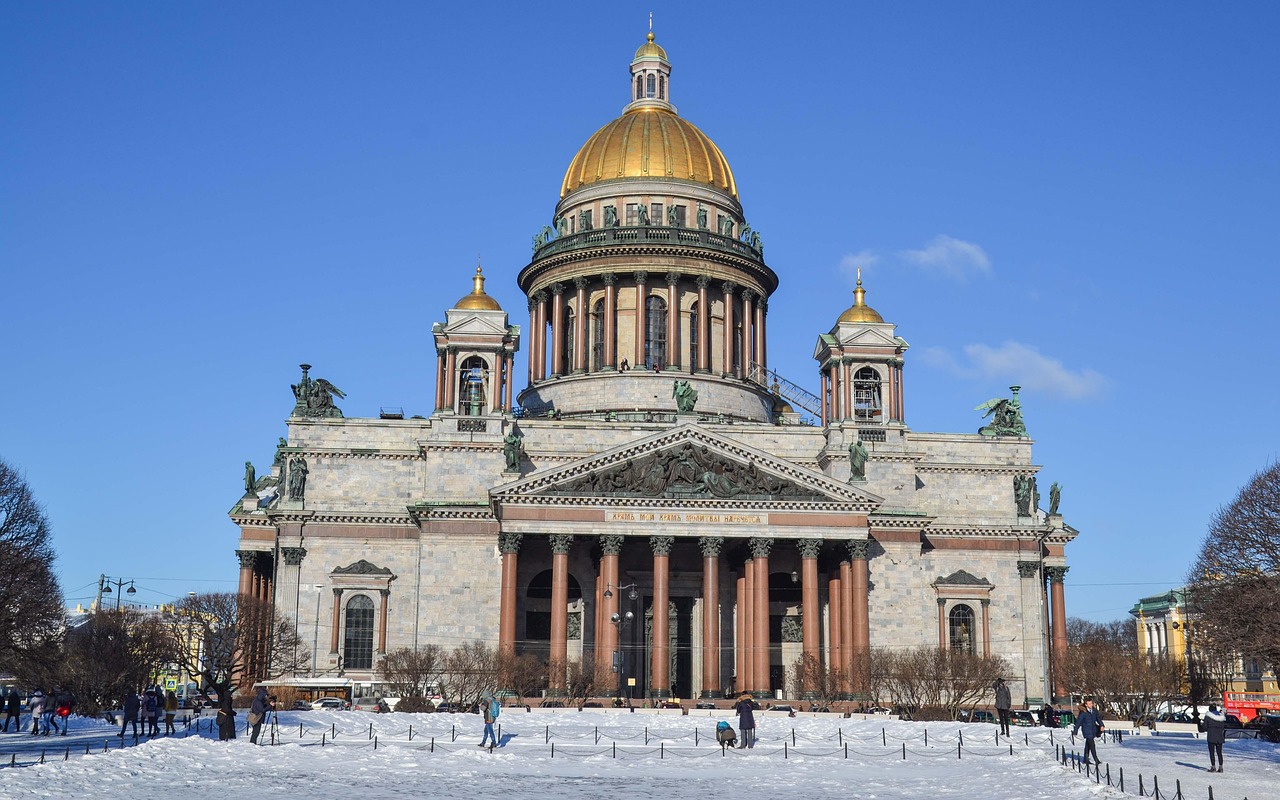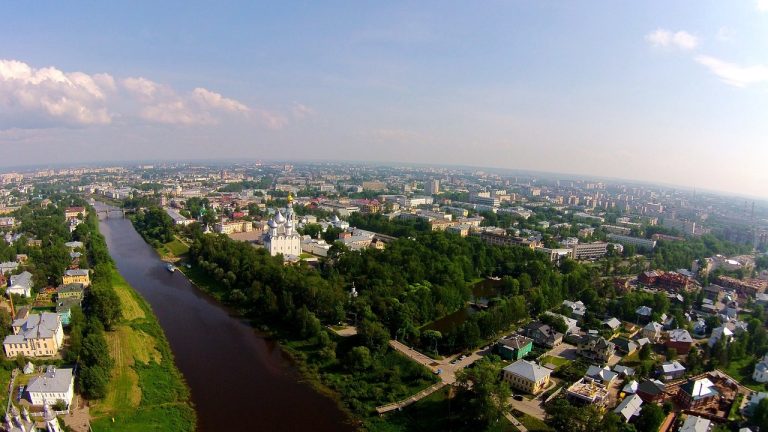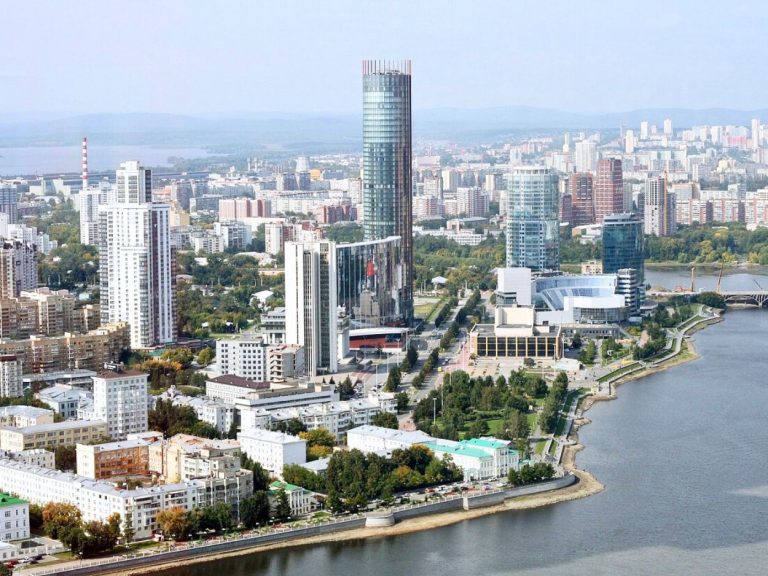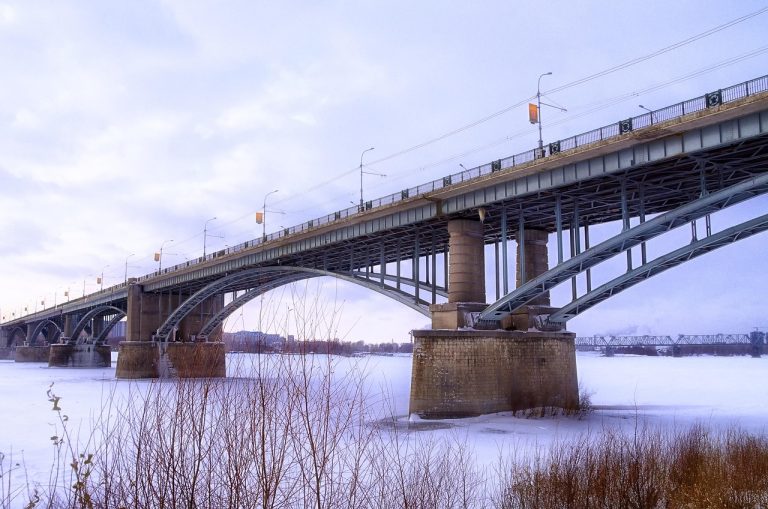How Many People Live in St Petersburg Russia Today
Saint Petersburg, Russia’s second-largest city, is governed as a federal city. It is located at 59.93750°N, 30.30861°E on the Neva River, near the Gulf of Finland. This city is a major port and cultural capital. People often wonder about the population of St Petersburg, Russia. The answer varies based on the criteria used.
In 2021, the city’s population was reported to be 5,601,911. The metropolitan area had a population of 6,421,000. Rosstat listed the federal subject’s population at 5,384,342 in the same year. These numbers reflect different reporting methods. As of January 1, 2025, Rosstat lists 5,652,922 residents for Saint Petersburg. The city’s population is growing, albeit at a slow rate.
The city spans 1,439 km² (556 sq mi), making it the smallest federal subject by area in Russia. It has a population density of approximately 3,993 people per km². Founded by Peter the Great on May 27, 1703, the city’s population has seen significant changes. There were sharp declines during the revolution, civil war, and the Siege of Leningrad. Yet, the city recovered to about 5.1 million by 1990. The 1990s saw a decline, but by 2020-2021, the population began to rise again.
Current Population of St Petersburg: Latest Counts and Trends
St Petersburg stands as a large, stable metropolis, shaped by migration and natural change. The city’s population is reported using various baselines, each tied to specific methods and times. This section aligns the population of St Petersburg with Russia’s demographic data, clarifying the practical meaning of these numbers.
Official City Population and Metro Area Figures
Authorities publish multiple official counts. In 2021, a commonly cited total lists 5,601,911 residents for the city. Rosstat’s 2021 register records 5,384,342, reflecting different cutoffs and federal subject boundaries. The wider metro is estimated at about 6.421 million, placing the population of St Petersburg among the top European urban areas.
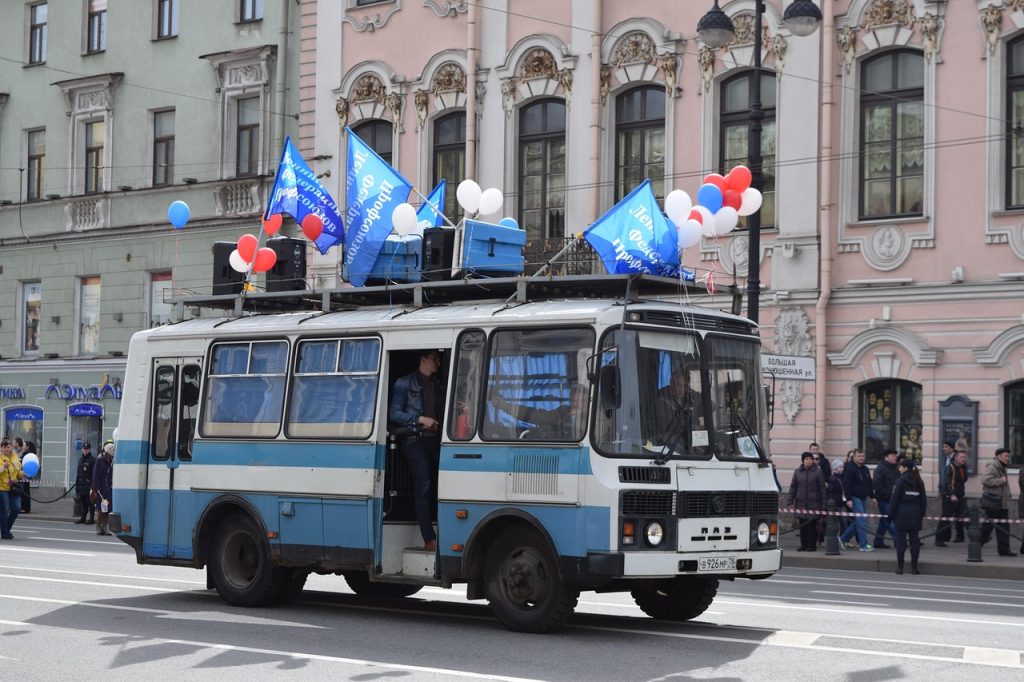
Latest update: City proper 5,652,922 (Jan 1, 2025, Rosstat); metro ≈6.42M. Figures differ by boundary (city vs federal subject vs metro)
These variations echo how city proper and agglomeration are defined. Such distinctions are standard in Russia’s demographic data and help explain why totals appear to diverge across sources.
Recent Estimates and Year-Over-Year Growth
City statistics noted 5,395,200 residents in 2020, when the pandemic slowed births and mobility. After near-flat movement, independent trackers point to gradual gains. Recent change is modest (≈0.2–0.4% y/y), with population gains driven mainly by net in-migration.
Migration leads this growth, while fertility remains modest by regional standards. The current population of St Petersburg has grown steadily, consistent with urban patterns seen in Russia’s demographic data.
How St Petersburg Compares to the Largest Russian Cities
Within city limits, Moscow (13.27M) ranks first; Saint Petersburg (5.65M) is 4th in Europe after Istanbul and London. The next tier—Novosibirsk (~1.7M) and Yekaterinburg (~1.54M) sits far lower, underscoring a wide gap within the largest Russian cities population.
This ranking highlights the distinct scale of the population of St Petersburg. It anchors Russia’s northwest and ranks among Europe’s largest urban centers, a status reflected across official tallies and Russia’s demographic data.
How Many People Live in St Petersburg Russia
Short answer: 5,652,922 (city, Jan 1, 2025); ≈6.42M (metro). This range is based on the standard city definition used in municipal statistics. It also reflects the year-by-year shifts recorded from 2021.
Preliminary official data indicate ~5.646 million as of Jan 1, 2025 2025. The 2002 census recorded 4,661,219 residents, which was about 3.21% of the nation at that time. A 2015 estimate reported 5,208,690 residents. These numbers show steady growth over two decades.
It’s important to note the differences in definitions. City registers, federal subject totals, and metro estimates use different collection rules and coverage. This is why analysts provide a range when discussing the population of St Petersburg Russia. They cross-check the st petersburg census series with current russia demographic data to give a credible answer for both city and metro scales.
St Petersburg Population in Context: Size, Density, and Geography
Scale, density, and location define the city’s urban profile. Readers often ask how big is St Petersburg and what those numbers mean for daily life. The answer ties the map to the headcount and shows how the st petersburg population clusters on limited land.
City Size: 1,439 km² and What That Means for Density
Saint Petersburg spans 1,439 km², or 556 square miles. It is the smallest federal subject by land area in Russia. With the 2021 city total of 5,601,911, the density is near 3,993 people per km².
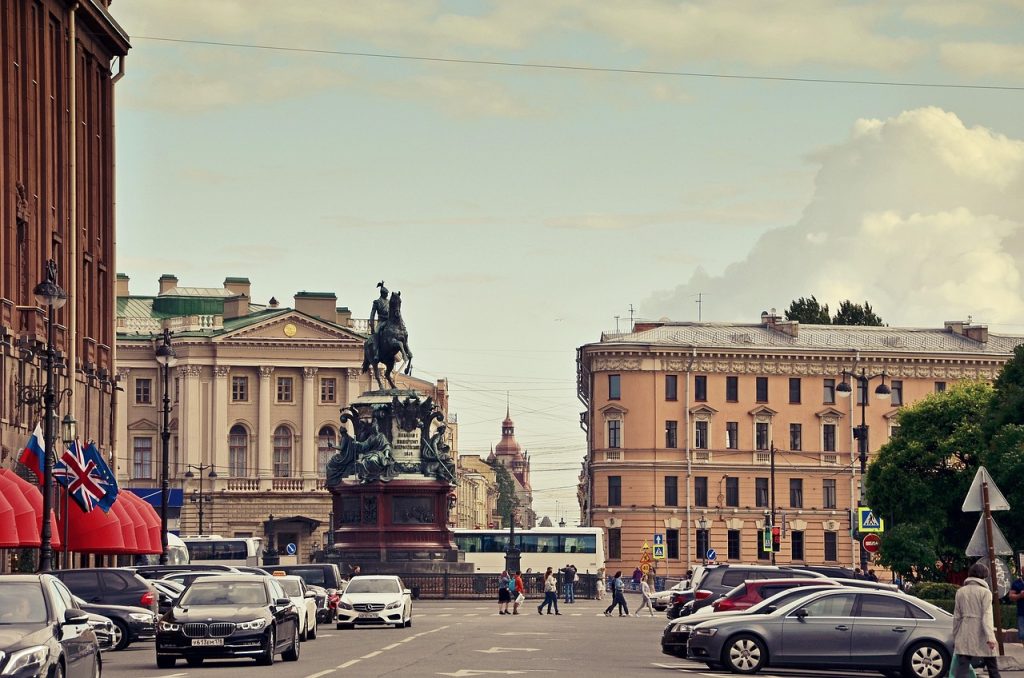
The compact footprint channels growth into mid- and high-rise districts. This shapes the population of st petersburg into dense neighborhoods, not sprawl.
Population Density Compared With Russian Urban Population Statistics
Against russian urban population statistics, the city sits near the top tier for density. Only Moscow combines a larger total with such intensity. Novosibirsk and Yekaterinburg post lower figures, spread across broader zones.
The st petersburg population compresses into transit-linked areas and Soviet-era microdistricts, with newer infill near hubs. This pattern highlights how big is St Petersburg is less about land and more about how people and jobs cluster.
Geographic Setting on the Neva and Gulf of Finland
Built on the Neva River at the head of the Gulf of Finland, the city’s waterways and islands concentrate life in the historic core. Port access on the Baltic Sea fostered trade, shipbuilding, and naval roles that drew workers for decades.
This maritime position continues to shape the population of st petersburg. Industrial zones, cultural sites, and logistics corridors line the river and coastal frontage. This layout aligns with russian urban population statistics on concentrated economic nodes.
| Metric | Figure | Note |
| Administrative area | 1,439 km² (556 sq mi) | City proper |
| Population (city) | 5,652,922 | Rosstat, Jan 1, 2025 |
| Density (city) | ≈3,930/km² (≈10,170/sq mi) | Calc: pop ÷ area |
| Population (metro) | ≈6.42 M | Standard metro estimate |
Demographic Profile and Census Insights
The st petersburg population saw significant fluctuations. It surpassed 1 million in the 1890s, reached near 3 million by 1939, and then plummeted after the Siege of Leningrad. By 1944, estimates ranged from 546,000 to 700,000 survivors. The city’s recovery was swift, passing 3 million in the late 1950s and 4 million by 1970. By the late 1980s, it had reached 5 million. The early 1990s saw a decline due to excess deaths, emigration, and factory closures. Growth resumed in the 2000s.
The 2002 st petersburg census reported 4,661,219 residents. By 2015, administrative tallies indicated 5,208,690 residents. Official and research sources estimated the population at 5.4–5.6 million by 2020–2021. These variations reflect differences in methodology and metro boundary choices common in comparing the largest Russian cities.
In the 2002 census, Russians made up 84.72% of the population. Notable communities included Ukrainians at 1.87%, Belarusians at 1.17%, and Jewish at 0.78%. Tatars, Armenians, Azerbaijanis, and Georgians also had significant presences. The 20th century saw a decline in Germans, Poles, and Baltic groups due to border changes and war. Recent decades have seen an influx of people from the Caucasus and Central Asia to meet labor demands.
The city’s age profile is skewed towards the elderly. By the 2000s, over 20% of the population was aged 65 and above. This is due to low birth rates and mortality stress in the 1990s. Fertility rates rose from about 0.9 children per woman in the late 1990s to around 1.6 in 2016. Despite this increase, the rate remains below replacement. Education levels are high, with about 1% without schooling, 26% with full secondary, 47% with vocational or higher, and 18% with a full degree.
Labor conditions in the city are strong by national standards. Unemployment is near 1.1%, supported by various sectors including headquarters roles, port logistics, culture, tourism, and services. Housing reflects a mix of Soviet-era kommunalkas and large postwar districts on the outskirts. Privatization has transferred many homes to residents, while gentrification in central areas is ongoing and uneven.
Early 2000s surveys showed about 41% identifying as Russian Orthodox and 21% as other Christian. Many called themselves non-believers. Fewer than 5% attended church regularly, a pattern typical of big cities in Russia and comparable to urban secularization elsewhere. These trends help explain the city’s place within the largest Russian cities population maps and the trajectory seen in each st petersburg census wave.
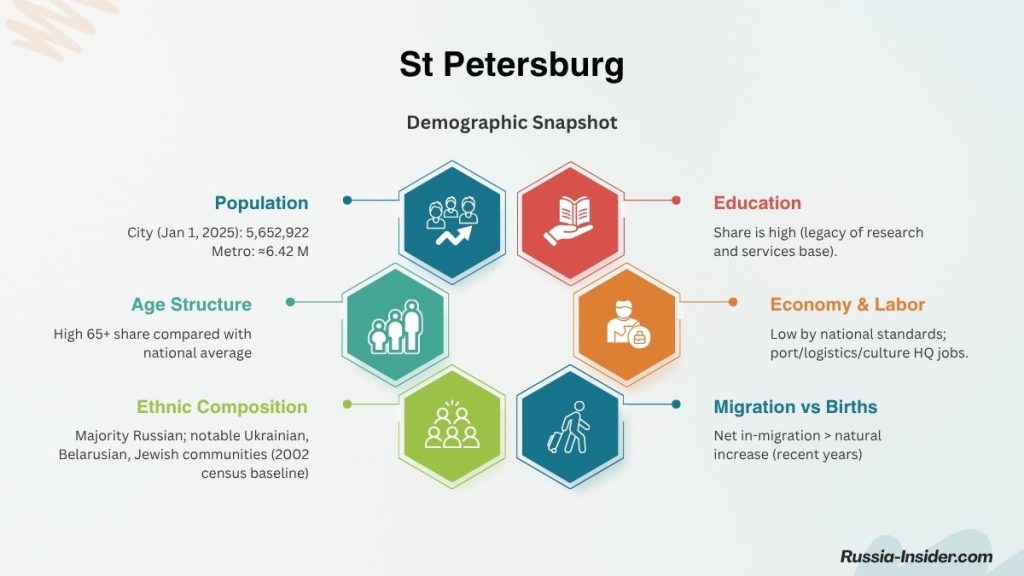
Conclusion
Saint Petersburg remains a large, stable metropolis posting modest, migration-led growth. The city proper counts 5,652,922 residents (Jan 1, 2025), while the metro area is about 6.4 million. Differences you see across sources usually reflect what’s being measured—the city within its administrative limits versus the wider urban agglomeration.
Over the past two decades the trajectory has been upward from the 2002 census baseline, but recent year-to-year gains are small rather than surging. In practical terms, the story is steadiness: a dense, economically significant hub for Russia’s northwest whose population has inched higher rather than leapt.Despite historical challenges, the population remains stable. This stability is supported by the city’s manufacturing, logistics, tourism, and cultural sectors.
The population of St Petersburg is growing gradually. Its density, geography, and economic influence suggest a steady increase. As discussions on housing, transportation, and industry evolve, the population of St Petersburg Russia is expected to remain close to its current range. Small annual increases will likely define the trend.
FAQs
What is the Current Population of St Petersburg, Russia?
The city’s population is estimated at 5,601,911 for 2021. Rosstat’s 2021 data lists 5,384,342 for the federal subject. By 2025, the population is expected to reach about 5.58 million, showing steady growth.
How Many People Live in the St Petersburg Metropolitan Area?
The metropolitan area is home to approximately 6.421 million people. This includes the city proper and surrounding municipalities that share labor markets and transport links.
Why Do Different Sources Report Different Figures for the Population of St Petersburg?
The discrepancy arises from varying methodologies. Some count the city proper, others the federal subject, and some the wider metropolitan area. The timing of counts and administrative boundaries can also affect the numbers, ranging from 5.38 million to 5.60 million for 2021.
How Fast is St Petersburg’s Population Growing?
The city’s population is growing at a rate below 1% annually. Recent estimates indicate about 0.9% annual growth, driven mainly by net in-migration, not high fertility.
How Does St Petersburg Compare With the Largest Russian Cities by Population?
Moscow leads with about 12.7 million residents. Saint Petersburg follows with roughly 5.5–5.6 million. Novosibirsk and Yekaterinburg, with populations of about 1.7 million and 1.54 million respectively, are significantly smaller.
What is the Size of St Petersburg and Its Population Density?
The city spans 1,439 km² (556 sq mi). With a 2021 population of 5,601,911, the density is approximately 3,993 people per km² (about 10,341 per sq mi), which is high by Russian standards.
How Does St Petersburg’s Density Compare With Russian Urban Population Statistics?
St Petersburg’s density is among the highest in Russia, due to its compact size and extensive multi-story housing. Most other large Russian cities have lower densities spread across larger areas.
What Geographic Factors Shape St Petersburg’s Demography?
The city’s location on the Neva River at the head of the Gulf of Finland influences its demography. Port access, canals, and islands concentrate jobs and services, sustaining high urban density and continued in-migration.
What Does the Term “Northern Capital” Signify for St Petersburg?
The moniker reflects its historical and cultural status, naval and port functions, and continued influence in Russia’s politics, economy, and arts.
